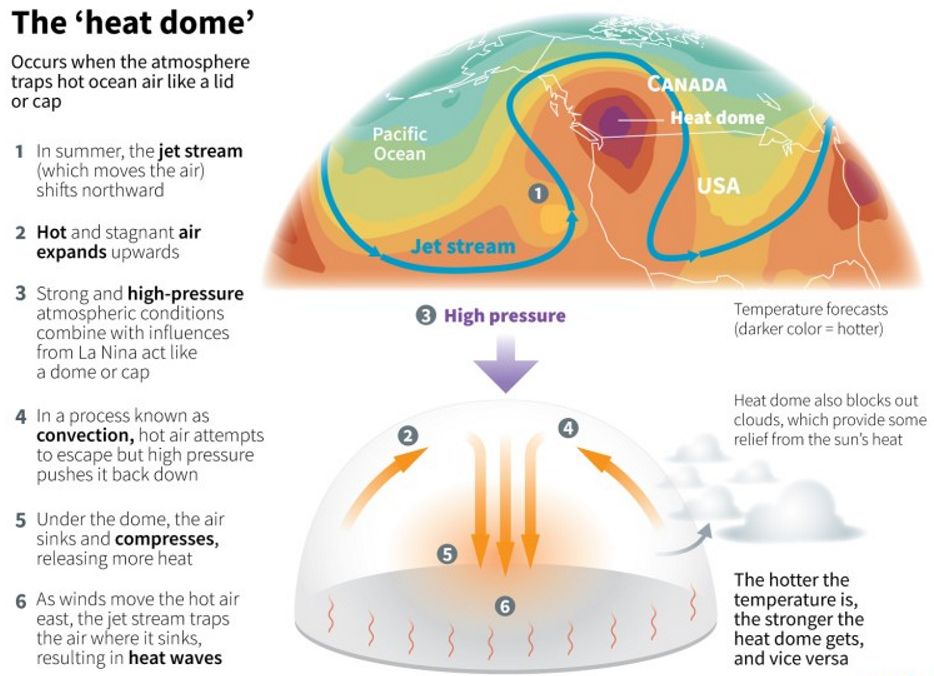Utility: Direct question can be asked on this topic.
Context: Parts of Canada and USA are reeling under severe heatwave caused due to a heat dome.
What is a heat dome?
-
According to The National Oceanic and Atmospheric Administration (NOAA), a heat dome occurs when the atmosphere traps hot ocean air like a lid or cap.
-
Heat dome is more likely to form during La Niña years like 2021, when waters are cool in the eastern Pacific and warm in the western Pacific.
-
The phenomenon begins when there is a strong change (or difference) in ocean temperatures. In the process known as convection, the temp difference causes more warm air, heated by the ocean surface, to rise over the ocean surface.
-
That temperature difference creates winds that blow dense, tropical, western air eastward. Eventually that warm air gets trapped in the jet stream (a current of air spinning counter clockwise around the globe) and ends up on the U.S. West Coast, resulting in heatwaves.
-
A heat wave is a period of unusually hot weather that lasts for more than two days. Heat waves can occur with or without high humidity and have the potential to cover a large area exposing a high number of people to hazardous heat.
-
Example: To understand what causes a heat dome, one should liken the Pacific ocean to a large swimming pool in which the heater is turned on. Once the heater is on, the portions of the pool close to the heat source will warm up faster and therefore, the temperature in that area will be higher. In the same way, the western Pacific ocean’s temperatures have increased in the past few decades and are relatively more than the temperature in the eastern Pacific.

Impact of a heat dome
-
Loss of life: Heat domes can lead to a sudden rise in fatalities due to extreme heat. These fatalities happen especially amongst those living without an air conditioner.
-
Damage to crops: The trapping of heat can also damage crops, dry out vegetation and result in droughts.
-
Rise in energy consumption: The heat wave will also lead to rise in energy demand, especially electricity, leading to pushing up rates.
-
Increase in wildfires: The heat domes can also act as fuel to wildfires, which destroys a lot of land area in the US every year.
-
Heat dome also prevents clouds from forming, allowing for more radiation from the sun to hit the ground.